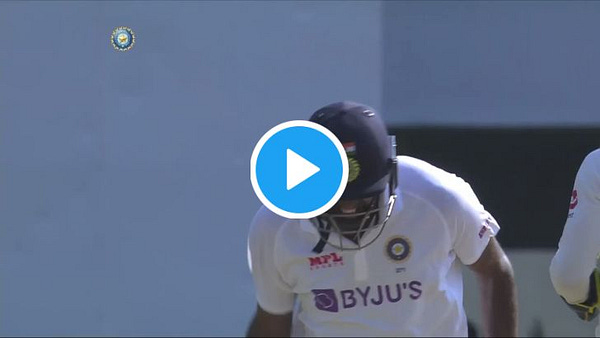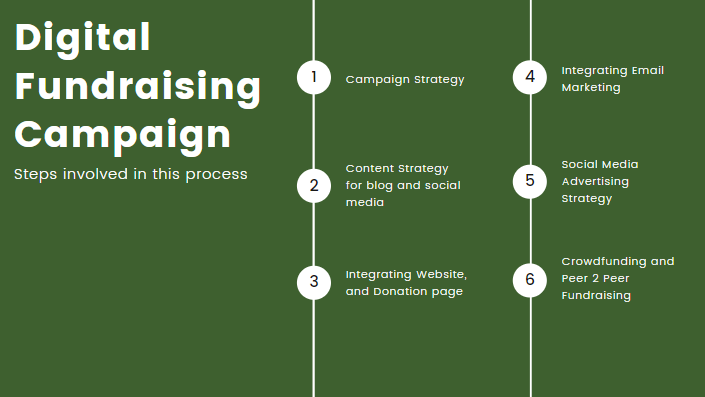Planning an awareness campaign for your nonprofit
A simple plan on focussing on things that matter for an awareness campaign
Let me tell you a Kutti Story - Ashwin anna came taught the English how to bowl and play mind games. And when the yesteryear English cricketers started complaining about Indians making turning pitches to suit the home team. Once again Ravichandran Ashwin walks on to the crease to join Captain Marvel - Virat Kohli who was already giving a masterclass on how to bat on turning and bouncing pitches.
The local boy at the Cheaupak Stadium on day four scored a magnificent century - 106 out of 148 balls while taking 8 wickets in the second test against England. Don’t miss Siraj’s celebration when Ashwin reaches 100.


Sitting in front of the idiot box I enjoyed every run scored and every wicket was taken. The banters of Pant behind the wicket, the massive bad luck of Pujara, Ishant the old horse still turning things, Rohit the hitman back in form, Axar out of syllabus for the English players, and the mass trolling of Sunil Gavaskar sitting on the commentary box.

The excitement of test matches in the country has also motivated brands to push their media budgets during ad breaks. And they are far too many. Some made me smile such as CEAT Don’t Be a Dummy but Maruti’s latest marketing drive - “People Technology” is the latest BS in the marketing world after Humaning from Mondelez.
Every time the Maruti ad and the Amazon ad stressing on the fact “Apne Amazon” would play; I would wish the world can be a better place without advertising.
Anyways the world isn’t revolving around my whims and fancies so back to human technology. While the profit-making brands are quadrupling on the human sentiments; the nonprofit space has increasingly missed out on the connection to sell a cause.
Awareness Campaigns are the lifeline for a nonprofit organization. Donation campaigns are nothing less but for now, let’s just focus on awareness campaigns.
Recently I had shared my thoughts about WaterAid India’s ongoing campaign #BattingforWater. The campaign is an awareness drive where the nonprofit is asking to help India to defend itself against COVID-19 by bringing water to those who need it the most.
To make its point the campaign has a video that showcases International cricketers playing with a broken-bat. “Since one in four households receive clean drinking water, the nonprofit organization that has been working in India since 1986 demonstrates the impact by asking cricketers to play with only 25% of the bat.”


The campaign was on TV with a well-defined strategy and on social media with fancy updates and celebrity tie-ups. This is a template method of doing an awareness campaign by nonprofit organizations.
However, the website was updated quite late about the campaign and it has no mentions on the blog. I had subscribed to their email updates, I am yet to hear from them on either about the campaign or onboarding a new subscriber/donor.
Let’s rollback. I started this post by calling out the whole madness around “Human Technology.” But nonprofits are ignoring this completely.
How?
WaterAid an international nonprofit has no activity around donor/subscriber onboarding. I have subscribed to their updates but there has been no attempt by the nonprofit to educate me about the organisation - how it is making an impact and how I can add more value to the work the nonprofit is doing.
In other words - the nonprofit hasn’t integrated a Welcome Series email update. This is a simple way of introducing your nonprofit to the world and trying to engage with your audience. This can be automated too.
One of the reasons why email still remains a big challenge for the majority of nonprofits even though they are very well aware of the benefits of the medium.
According to the Nonprofits Communications Trends report: “Nonprofits say email is their most important communications channel, but the sector is woefully behind in implementing best practices for email list management and engagement.”
Breakthrough TV’s latest campaign #DakhalDo had a very well integrated on TV with its association with NDTV India(Hindi) especially considering that it is targeting the Hindi belt of India.
However, the nonprofit lacked a tighter script on digital - the integration of the blog with the awareness campaign was missing.
The problem is not with Nonprofits, it is how we marketers have sold digital marketing in terms of engagement and views. Largely NPOs have associated awareness campaigns with making a buzz on social media and following the age-old tricks of the industry by roping in celebrities.
Additionally, part of the problem lies with digital agencies that have sold such engagement campaigns to nonprofit organizations. The template that works for the for-profit organizations, unfortunately, won’t work or rather won’t have a long-lasting effect on the existing and new donors.
Planning and executing an effective awareness campaign
Awareness campaigns are nothing but a nonprofit communicating with its existing and probable donors. So the plot of the campaign shouldn’t be unfolding on social media (a medium that you don’t own) but should be happening on the organization’s website.
Website
The website is the first link that usually pops up for your organization and it is the biggest asset that you own on the Internet. The entire script of the awareness campaign should unfold here and other mediums just become the channels of promotion to inform and educate your audience.
Blog
While you plan to update your website with the campaign idea; your blog should have a tentative content plan that would take the campaign forward. Everything that has been planned online and offline should be recorded on the blog. In 2021 blog still plays a strong role and to know more read everything about Content Marketing 2021.
Email
Email content plan should follow the blogging content calendar. Once in a week go ahead and speak to your audience about the campaign, the activities you are doing, and how things are unfolding. Give them a preview and share the email links.
Don’t become hungry to get traffic but focus on the communication and put yourself into the shoes of the subscriber/donor. Avoid those jazzy templates as much you can, and write simple emails. You are talking to humans and not robots, and have minimum links. Whatever it be plan and sync it with your blog.
Social media
The social media plan needs to sit along with your blogging content. Decide on the social networks you want to focus on depending on Google Analytics and the traffic., create your tentative content plan sync it up with your blogging content. Just don’t do that tagging exercise, people don’t want to be tagged even for a cause-related campaign. Users are not dumb.
If you are able to tie-up with influencers then make sure that they are not the regular contest players. Find people who command authority and bring value to the work you are doing. Be it celebrity or internet influencer see that you have a plan ready and make sure you amplify it across all other owned mediums pre and post the engagement. Don’t shy off from your job.
Late December 2020, Pratham tied up with Rajeev Masand to do an exclusive video conversation with Bollywood actor Ranbir Kapoor. The actor speaks about his acting career, about losing his father, and the influence that Rishi Kapoor had on his life. He also answered questions from Pratham donors.
The nonprofit did this engagement for its completing 25 years. And the nonprofit failed to mention the activity on social media or anywhere else. I am not subscribed to their email updates.
Such a golden opportunity missed since Ranbir rarely speaks and he isn’t present on social media too. The tie-up was interesting but the execution and the amplification could have been planned well.
Digital advertising
Finally, digital advertising is also an important piece considering organic reach is almost dead on social media.
One more reason why a nonprofit should invest in its owned mediums - Website, Blog, and Email.
Before you burn money in digital advertising, make sure you have a working Google Grants active for your organization. And even if you have the money start small with digital advertising. Build or have a weekly plan where you make sure you are checking it twice a week. You might have people to do this or agencies but make sure you match the results with your business objective. Checking reports isn’t rocket science. It will keep you aligned with your campaign goals.
Did I miss something?
Eary this year I shared the same awareness campaign idea with a nonprofit that wanted to start an awareness campaign that also intended to raise money. The only thing that is missing from the above list is integrating the donation page. The nonprofit backed off due to budget issues but this was the core slide that I had shared:
Do it in any way that you prefer but make sure you have a plan before you execute and don’t unfold your campaign everywhere and look like a fool.





